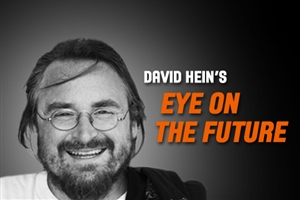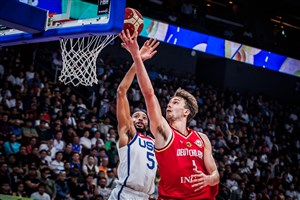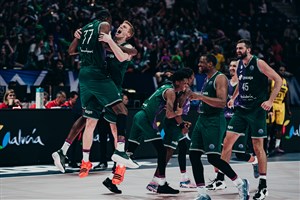
Building an audience: What does Dancing with the Stars have to do with wheelchair basketball?
CHARLOTTE (Steve Goldberg's Wheel World) - So I'm sitting here on Tuesday night watching the final episode of Dancing with the Stars.
It's not a show that I've ever tuned into, but I want to see if Paralympic snowboarder Amy Purdy, a bronze medalist in Sochi, can win in another competition where one would think having natural legs would be a prerequisite.
I know this is a basketball column but please indulge me for a bit. (I was flipping back and forth with the Pacers-Heat game but this was a Game 7 for Purdy.)
Purdy, which sounds like how we southerners say "pretty" and it's appropriate here, is attractive to me for the same reason that I am drawn to watching athletes like Patrick Anderson, Becca Murray, Paul Schulte, and Mari Amimoto play ball.
Same goes for non-wheelchair players such as LeBron James, Sue Bird, Kevin Durant, and Maya Moore.
There's a tenacity and elegance to their game, a smoothness tinged with ferocity, a competitor's drive to win.
Her partner, Derek Hough, said one of the best things about dancing with Purdy is that she never complained about her feet hurting.
You get that from most wheelchair ballers who go out and bang it up in games and practice, ice it down, and then go do it again.
Purdy didn't win, finishing second to Olympic gold medal ice dancer Meryl Davis, but just her being there and the impressions she made on her path to the final will have lasting and positive implications for Paralympic sport in general, and even wheelchair basketball specifically, going forward.
On the heels of NBC finally giving the Paralympic Games significant coverage from Sochi with plans for more from Rio, any chance to showcase a Paralympic athlete, regardless of sport, is a good thing.
This is not the first time an adaptive sport athlete has made a splash on primetime TV.
A wheelchair basketball player won the first U.S. season of the globally popular television series, Big Brother.
In 2000, Eddie McGee, a single leg amputee, was introduced to America as the genre ironically called "Reality Television" debuted.
A long time wheelchair basketball player for teams including the Long Island Express, Arkansas Jr. Rollin' Razorbacks, University of Texas-Arlington and New York Rollin' Knicks, his being an athlete was part of his identity on the show.
The worldwide publicity that followed his win described him as a wheelchair basketball star.
That opened awareness for millions of Americans who most likely never knew the game existed and hopefully changed perceptions of what disability is.
Eddie would later take his talents, both in basketball and acting, to Los Angeles to pursue his entertainment career, while hitting the court with the Fast Breakin' Lakers.
Whether it's specific to wheelchair basketball as with McGee on Big Brother or the popular Guinness beer commercial last year or general to adaptive sport as with Purdy, every opportunity to reach a mainstream audience is an important one.
This goes as well for events like the NBA/NWBA All-Star Wheelchair Classic, which has been part of the NBA All-Star weekend since 1998.
Held on the center court at Jam Session, some have been better than others depending on the ease of access to that court as it promotes an opportunity for fans who may not know about wheelchair basketball to see it even if just by chance.
Hopefully, it will catch their attention and instill the desire to see it again.
That could translate to more viewership when NBC televises the next Paralympics from Rio in 2016.
Even better, it may help generate coverage of wheelchair basketball and other Paralympic sport on the road to Rio over the next two years. Not just in the U.S. but around the world.
Note to the producers of Dancing with the Stars: of all the 38 athletes you've had on the show, only three have been basketball players.
It's time for another one or two. How about former US Paralympian Alana Nichols and the Miami Heat's Dwyane Wade? She's got moves like Jagger and he dresses like a dancer already.
If you can't decide between a male or female, go with Dennis Rodman; he can't decide either.
Steve Goldberg
FIBA
FIBA's columnists write on a wide range of topics relating to basketball that are of interest to them. The opinions they express are their own and in no way reflect those of FIBA.
FIBA takes no responsibility and gives no guarantees, warranties or representations, implied or otherwise, for the content or accuracy of the content and opinion expressed in the above article.
To help make this column as inclusive as possible, please send any national or international event information, story suggestions, or comments to wheelworldmail@gmail.com.
















